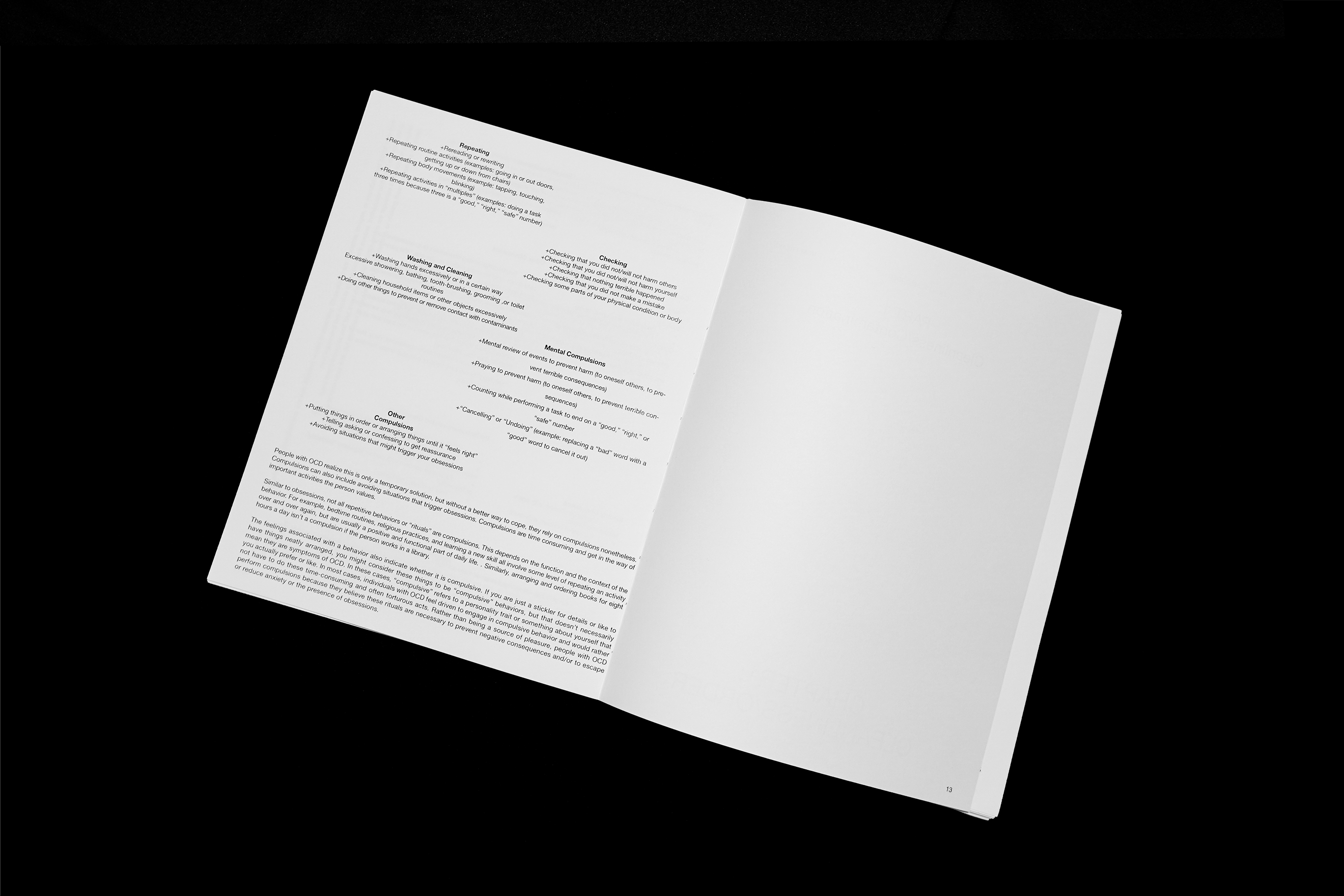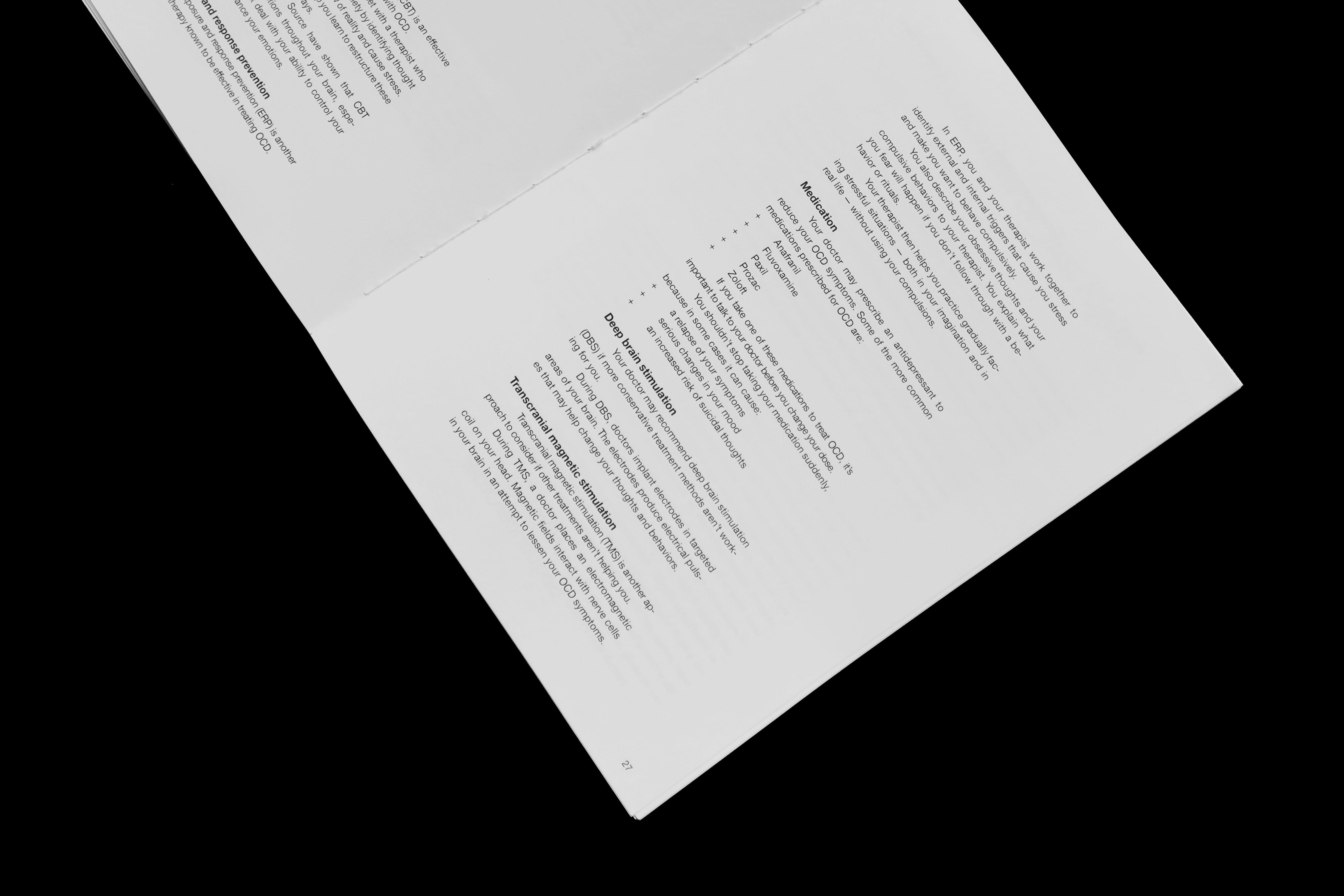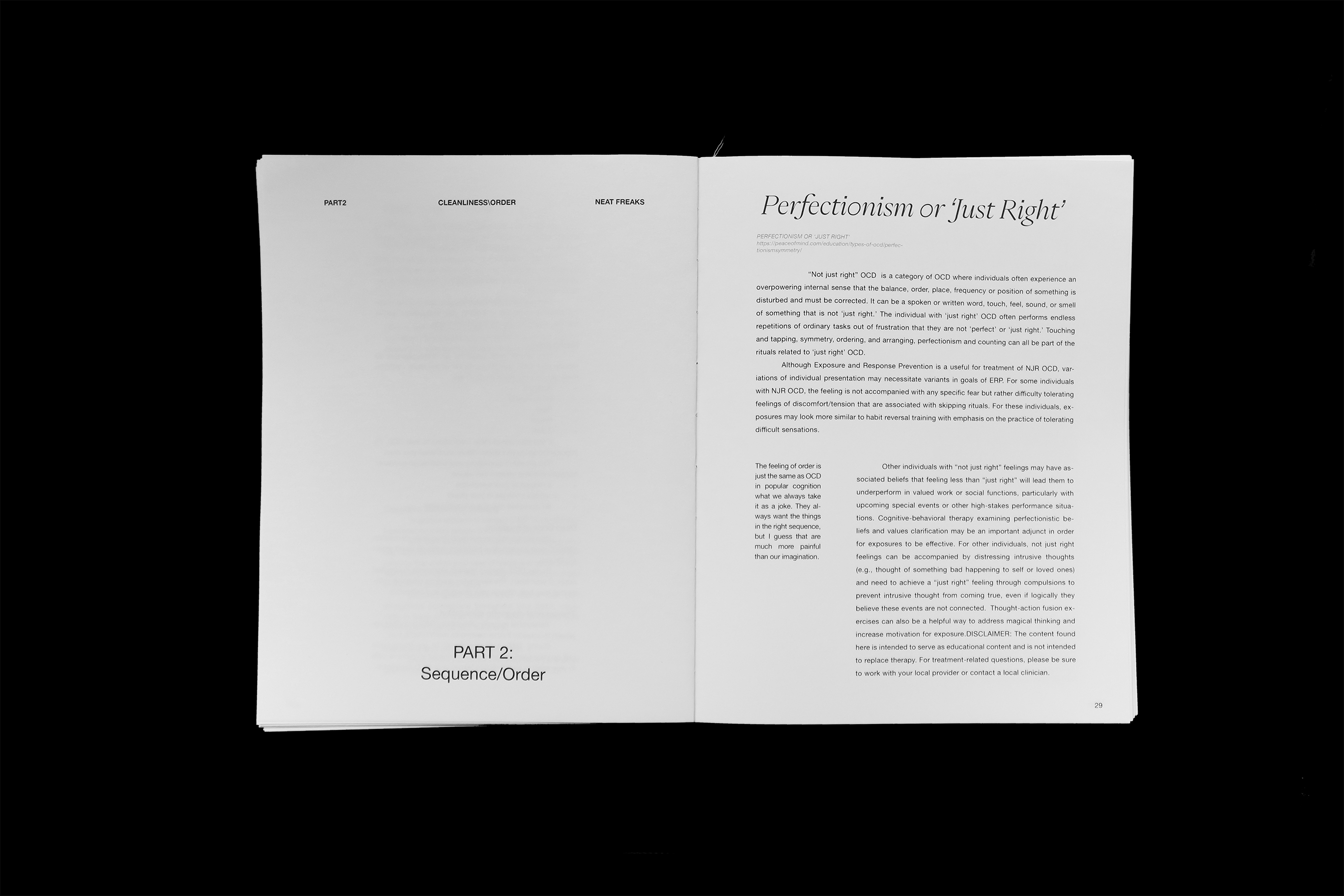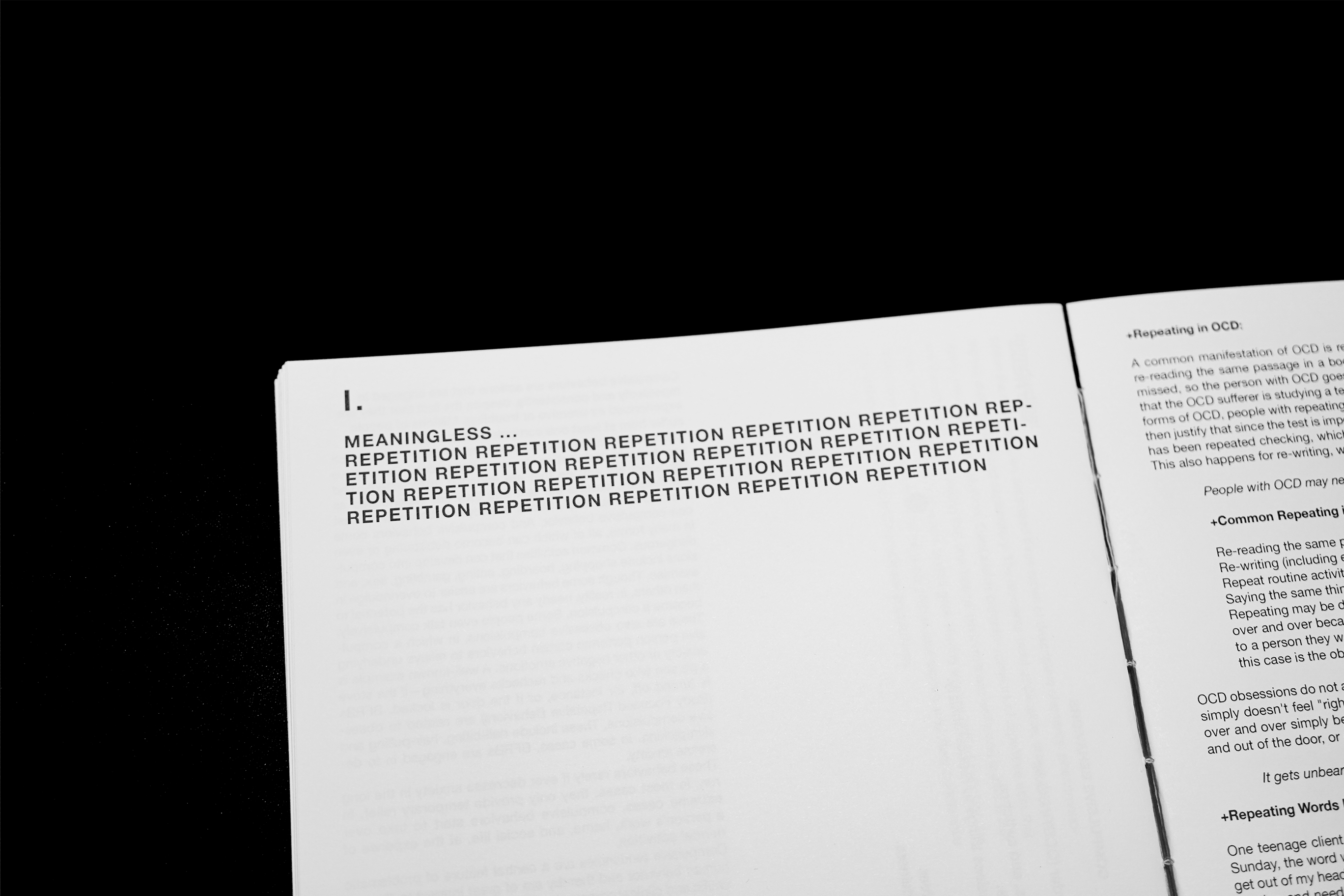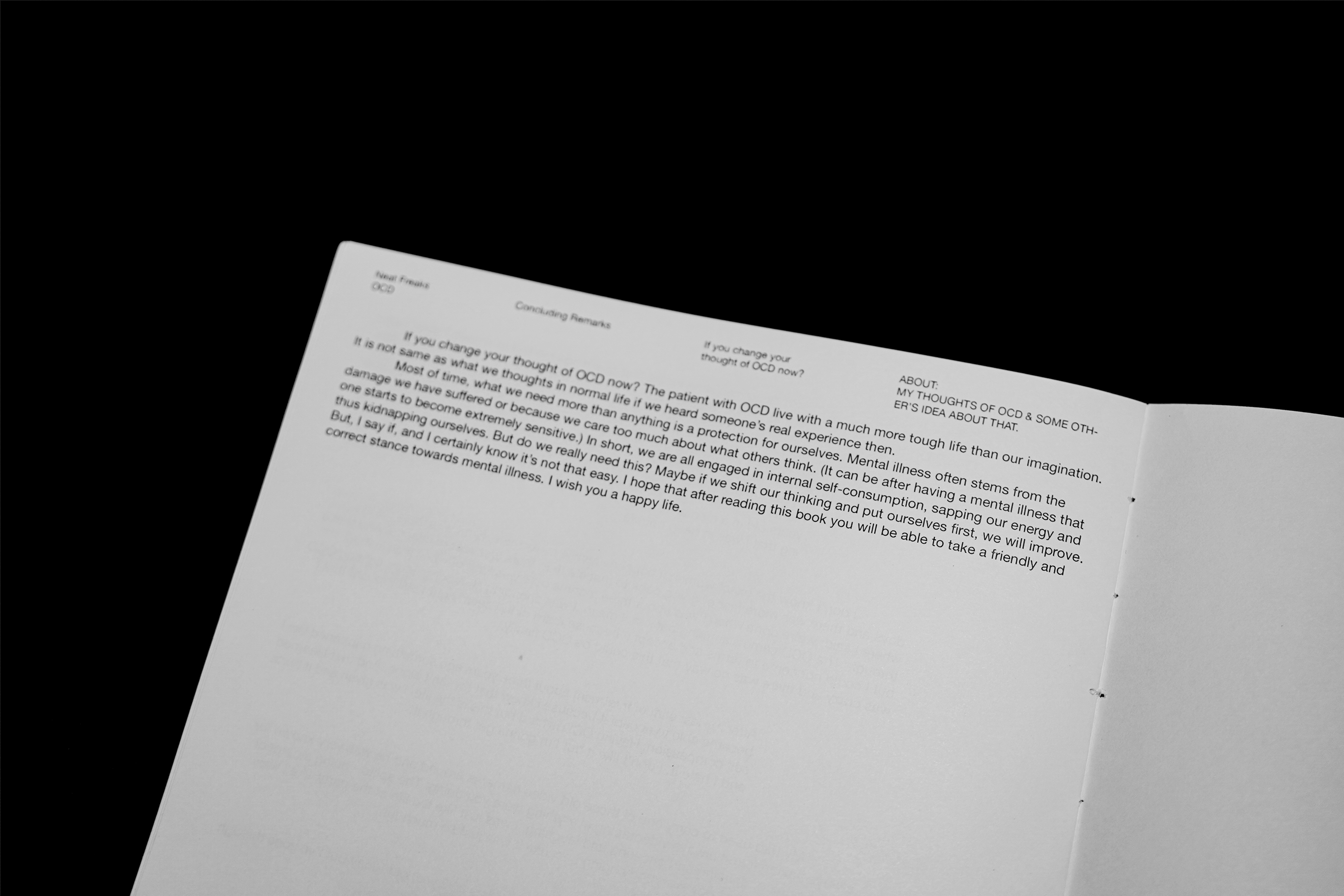
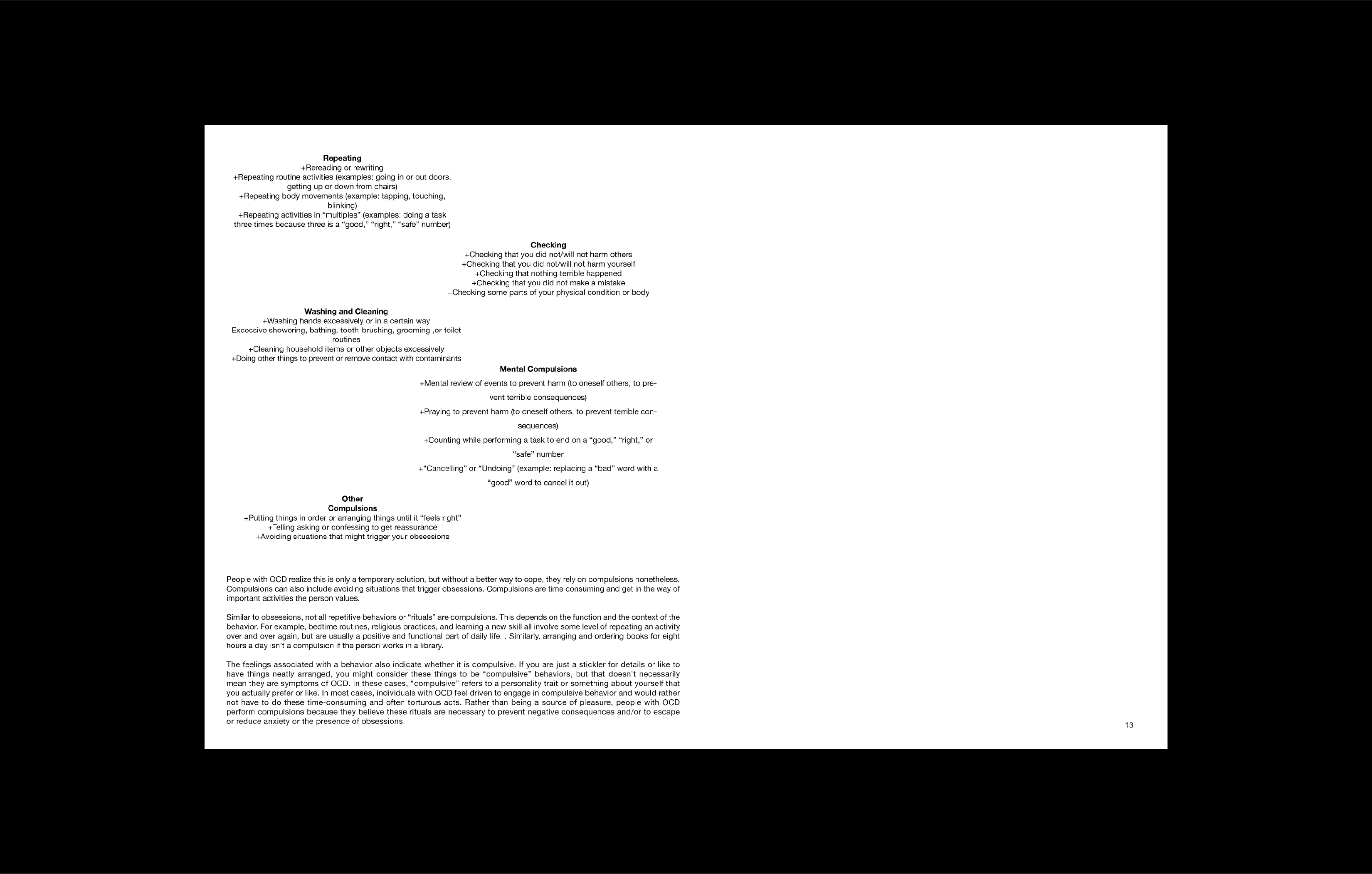
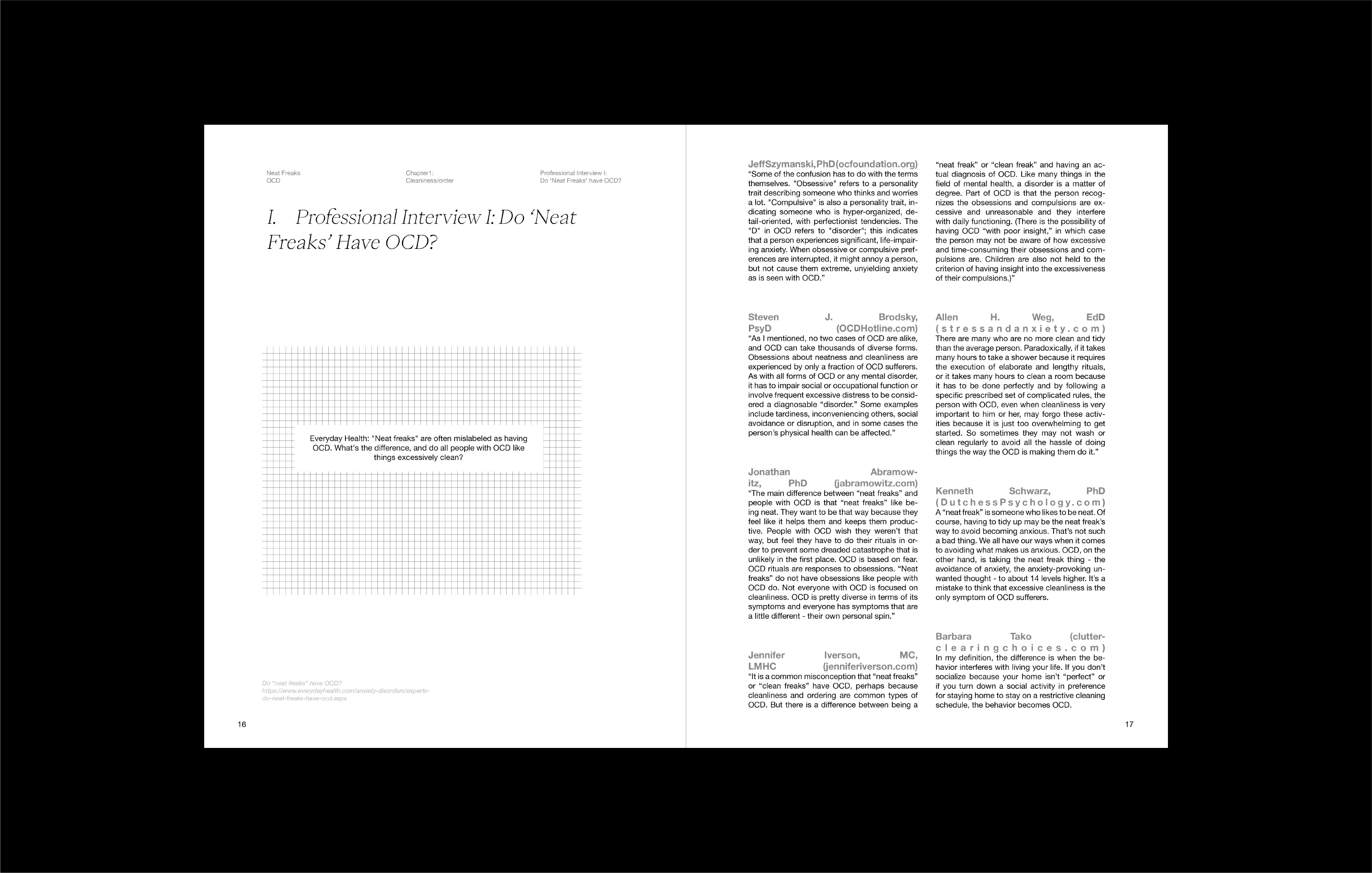


“I’m not a neat freak!” The public has long flirted with the concept of obsessive-compulsive disorder (OCD) in a light-hearted and joking manner. However, my perspective changed when I heard firsthand about the challenges faced by the mother of a friend with OCD. Driven to promote a deeper understanding of this mental illness, I embarked on an extensive research journey, delving into research reports and conducting interviews.
In my project, I aimed to shed light on OCD through a text-only layout. By presenting information gathered from various sources, I sought to dispel misconceptions and provide the public with a comprehensive understanding of the disorder. In addition, I used creative and thought-provoking wordplay in the layout to evoke discomfort and enable the reader to grasp the profound impact of OCD on the individual.
